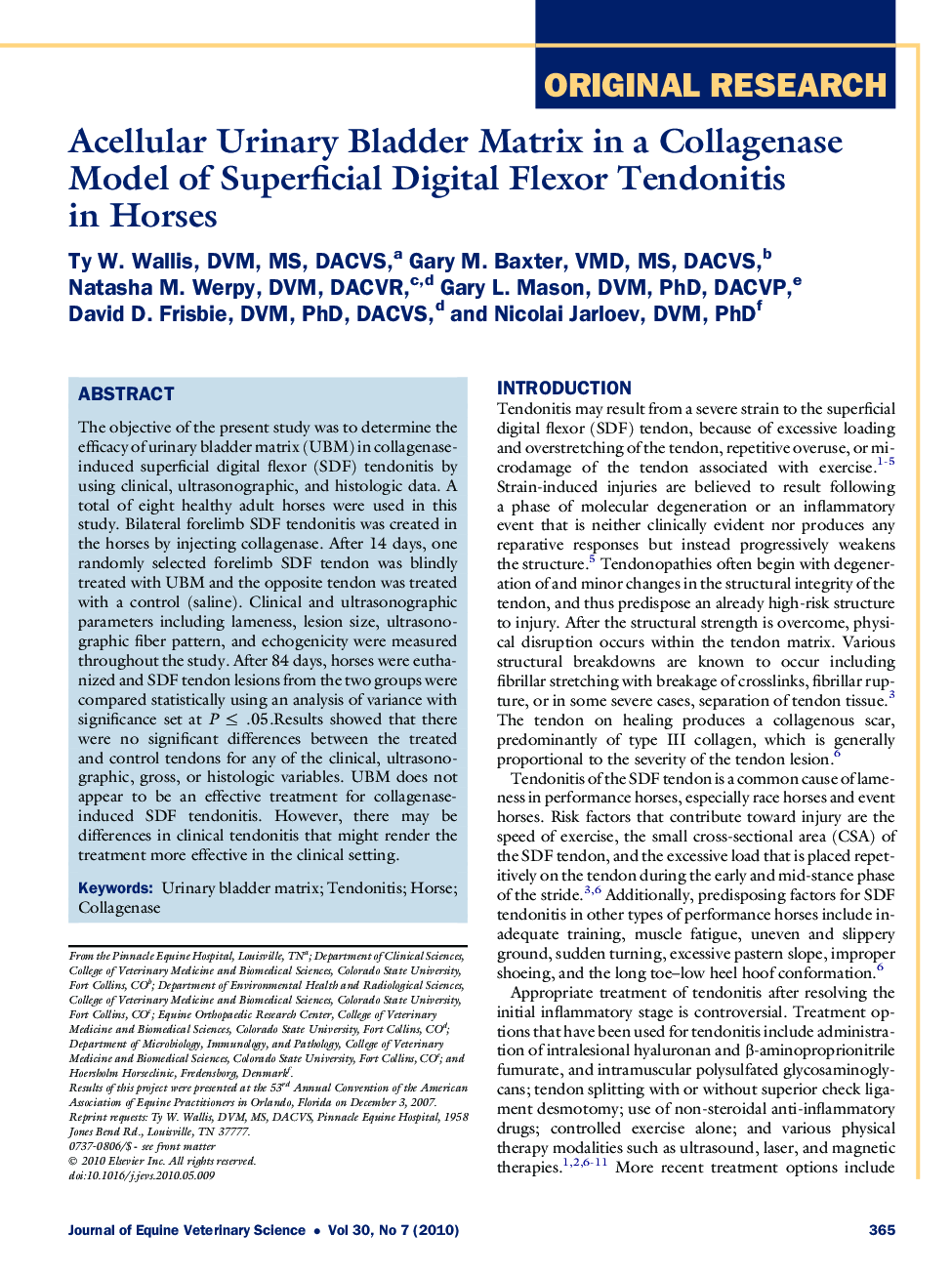| Article ID | Journal | Published Year | Pages | File Type |
|---|---|---|---|---|
| 2395947 | Journal of Equine Veterinary Science | 2010 | 6 Pages |
The objective of the present study was to determine the efficacy of urinary bladder matrix (UBM) in collagenase-induced superficial digital flexor (SDF) tendonitis by using clinical, ultrasonographic, and histologic data. A total of eight healthy adult horses were used in this study. Bilateral forelimb SDF tendonitis was created in the horses by injecting collagenase. After 14 days, one randomly selected forelimb SDF tendon was blindly treated with UBM and the opposite tendon was treated with a control (saline). Clinical and ultrasonographic parameters including lameness, lesion size, ultrasonographic fiber pattern, and echogenicity were measured throughout the study. After 84 days, horses were euthanized and SDF tendon lesions from the two groups were compared statistically using an analysis of variance with significance set at P ≤ .05.Results showed that there were no significant differences between the treated and control tendons for any of the clinical, ultrasonographic, gross, or histologic variables. UBM does not appear to be an effective treatment for collagenase-induced SDF tendonitis. However, there may be differences in clinical tendonitis that might render the treatment more effective in the clinical setting.
